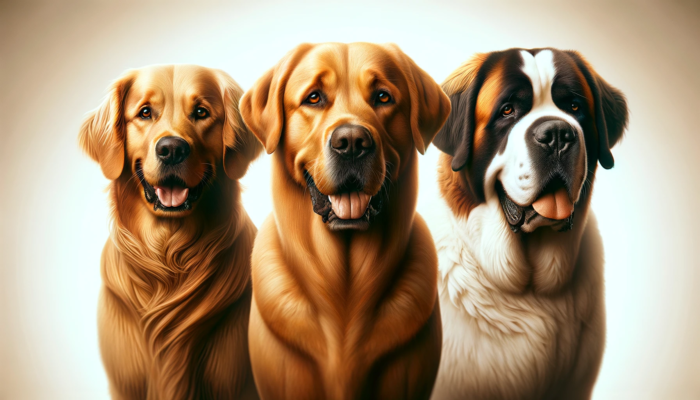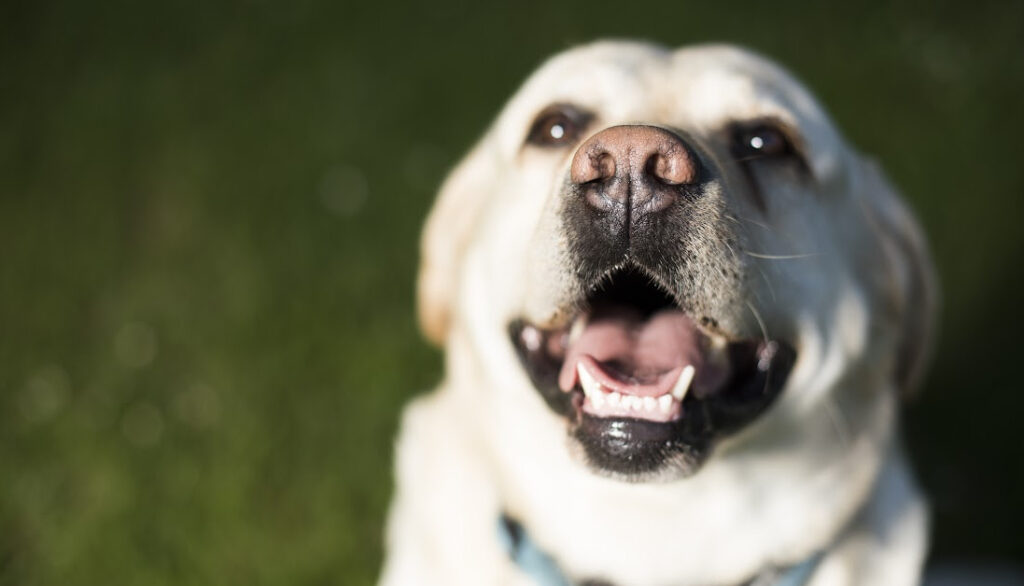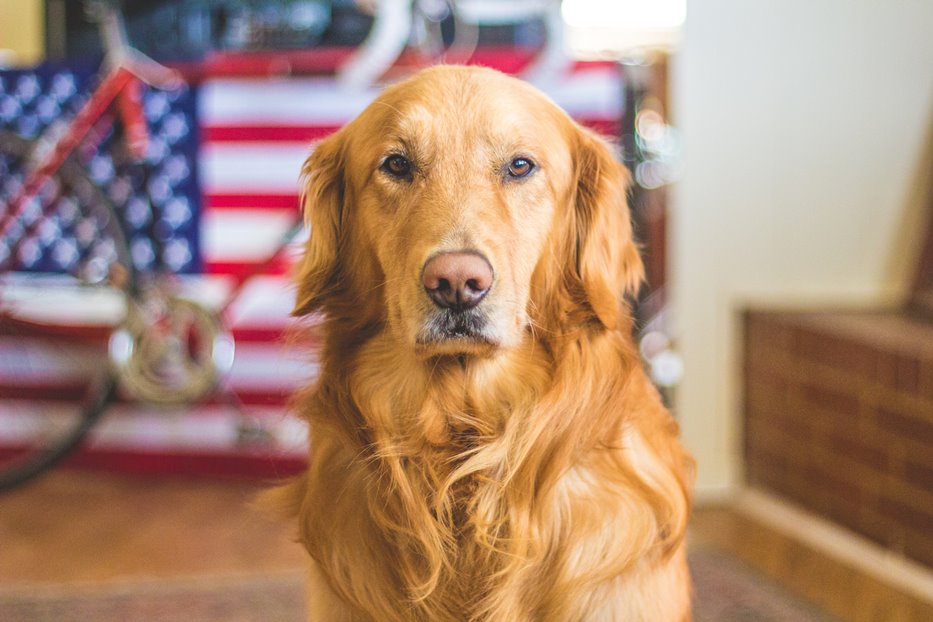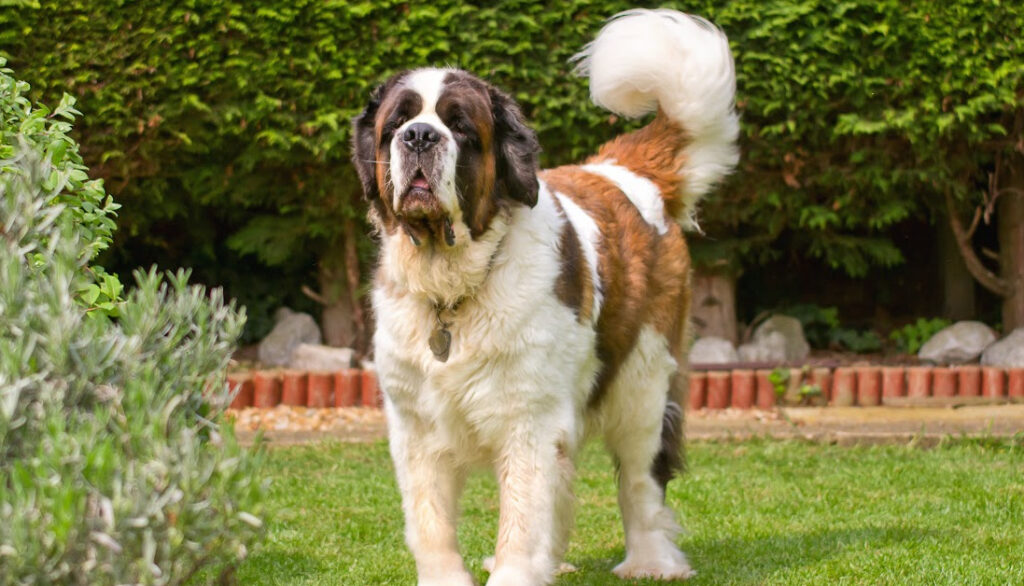Introduction to Canine Shedding
Having a furry friend in your home can be a joy, but it can also mean dealing with a lot of fur on your floors, furniture, and clothing. You may be wondering, “what dog breeds shed the most?” Well, I’m here to help you understand the shedding process, the factors that influence shedding rates, and the specific breeds that are known for heavy shedding.

Understanding the Shedding Process
Shedding is a normal process for dogs. It’s how they naturally lose old or damaged hair. The amount and frequency of shedding can depend on their health, breed, and season. For instance, some dogs have double coats that “blow out” or shed heavily twice a year, while others like Dalmatians, shed lightly but constantly.
Factors Influencing Shedding Rates
There are several factors that can affect how much a dog sheds. These include breed genetics, health, diet, and even stress. Some dogs have hair that grows continuously and only falls out when brushed or broken, while others have hair that grows to a certain length and then falls out.
Top Dog Breeds Known for Heavy Shedding
List of High-Shedding Breeds
Some breeds are just known for being heavy shedders. These include the Labrador Retriever, German Shepherd, Golden Retriever, Siberian Husky, and many more.
Characteristics of Heavy Shedders
Heavy shedding breeds often have double coats, which provide insulation in cold weather but also produce a lot of loose hair. These dogs typically have a dense undercoat that sheds in large clumps, especially during seasonal changes.
Grooming Essentials for High-Shedding Breeds
Tools for Managing Shedding
Managing shedding involves regular grooming. Essential tools include a good quality brush that reaches the undercoat, a de-shedding tool to remove loose hair, and possibly clippers for breeds with long hair.
Grooming Techniques to Reduce Shedding
Regular brushing is key to managing shedding. It helps remove loose hair and can also distribute natural oils that keep your dog’s skin and coat healthy. Regular baths with a moisturizing shampoo can also help.
Nutritional Strategies to Minimize Shedding
Importance of Diet in Coat Health
A healthy diet plays a crucial role in your dog’s coat health. High-quality dog food with the right balance of protein, carbohydrates, fats, vitamins, and minerals is essential for maintaining healthy skin and fur.
Supplements and Foods to Support Skin and Fur
Certain supplements and foods can also support skin and fur health. These include Omega-3 and Omega-6 fatty acids, vitamin E, biotin, and certain types of fish and flaxseed.
Creating a Shedding Management Routine
Daily and Weekly Shedding Control Practices
A consistent routine is key to managing shedding. This can include daily brushing, weekly baths, and regular check-ups to ensure your dog is healthy.
Seasonal Considerations for Shedding Management
Different seasons may require different shedding management strategies. For example, during the warmer months, you may need to brush your dog more often to prevent excessive shedding.
Home Cleaning Tips for Dog Owners
Strategies for Keeping a Clean Home
Regular vacuuming, using lint rollers, and covering furniture with washable blankets can all help keep your home clean even with a high-shedding dog.
Must-Have Cleaning Supplies for Pet Owners
Key cleaning supplies for pet owners include a good vacuum cleaner, pet hair remover tools, and cleaning products safe for pets.
Dealing with Allergies and Shedding
Understanding Pet Allergies
Dog hair itself is not allergenic, but it can carry dust and other allergens. If you or a family member is allergic, it’s important to manage shedding effectively.
Tips for Allergy Sufferers Living with High-Shedding Dogs
Strategies can include limiting the dog’s access to certain areas of the house, using air purifiers, and washing bedding regularly.
Professional Grooming and Shedding Solutions
Benefits of Professional Grooming Services
Professional groomers have the tools and knowledge to deal effectively with shedding. They can also provide valuable advice tailored to your specific breed.
When to Seek Professional Help for Shedding Control
If shedding becomes excessive or if your dog seems uncomfortable, it’s always a good idea to seek professional advice. Remember, shedding is normal but excessive shedding can sometimes indicate health problems.

Top Dog Breeds Known for Heavy Shedding
Welcome to the exciting world of pet parenting, complete with all its joys, challenges, and yes, lots of fur! If you’ve ever wondered “what dog breeds shed the most?”, you’re not alone. After all, it’s one thing to fall in love with a fluffy pooch at the shelter, but it’s quite another to find your living room carpet transformed into a fur carpet.
List of High-Shedding Breeds
While all dogs shed to some extent, certain breeds are infamous for their shedding abilities. Here’s a list of some of the top shedding dog breeds:
- Alaskan Husky: Bred for harsh climates, these dogs have a thick double coat that sheds heavily, especially during the shedding season.
- Labrador Retriever: America’s favorite dog breed is also one of the top shedders, with their short coat shedding continuously throughout the year.
- German Shepherd: These intelligent and loyal dogs have a dense double coat that requires regular grooming to manage their shedding.
- Golden Retriever: Their beautiful golden coat comes with plenty of shedding, particularly in spring and fall.
- Saint Bernard: These gentle giants are heavy shedders, with their thick coat shedding constantly and even more so during the shedding season.
Characteristics of Heavy Shedders
So, what makes these breeds such serious shedders? Here are a few key characteristics:
- Double Coats: Many high-shedding breeds have a double coat, with a dense undercoat for insulation and a protective outer coat. These dogs usually shed their undercoat during the shedding season, leading to a lot of hair around your home.
- Size: It’s simple math – larger dogs have more hair to shed. So, if you have a large breed dog, you can expect more fur around the house.
- Health & Nutrition: A dog’s health and diet can also affect shedding. Dogs with allergies, skin conditions, or those on a poor diet may shed more.
While it can be a bit surprising to see the amount of fur these breeds can shed, don’t let it deter you from welcoming one of them into your home. Remember, shedding is a natural process and a sign of a healthy coat. With the right grooming tools, techniques, and a bit of patience, you can manage the shedding and enjoy the company of your furry friend. After all, a bit of fur is a small price to pay for the unconditional love and companionship these fantastic breeds have to offer.
Grooming Essentials for High-Shedding Breeds
Being a parent to one of those dog breeds that shed the most can be a challenge, but it doesn’t have to be an uphill task. Having the right grooming tools and strategies up your sleeve can go a long way in controlling shedding and keeping your home fur-free.
Tools for Managing Shedding
Investing in quality grooming tools is a must for owners of high-shedding dogs. Here are some indispensable tools that can help manage the fur explosion:
- De-shedding tools: These tools are designed to reach the undercoat of your dog, removing loose fur before it gets a chance to fall off. The FURminator deShedding Tool is a popular choice among pet parents.
- Slicker brushes: Slicker brushes are useful for removing mats and tangles, which can contribute to increased shedding. Brushing a couple of times a week with a slicker brush can help keep your dog’s coat healthy and minimize shedding.
- Undercoat rakes: These tools are specifically designed for dogs with double coats. The rake penetrates into the thick undercoat to remove loose hair effectively.
- High-velocity dryers: After bathing your dog, using a high-velocity dryer can blow out the loose fur from your dog’s coat. It’s a secret weapon used by many dog groomers.
Grooming Techniques to Reduce Shedding
Along with the right tools, using correct grooming techniques can make a significant difference in dealing with shedding. Below are some tried and tested grooming steps to manage shedding effectively:
- Regular Brushing: Regular brushing is the most effective way to control shedding. It helps remove loose fur and distributes natural oils, keeping the skin and coat healthy. For high shedding breeds, brushing should be done daily.
- Proper Bathing: Bathing your dog with a deshedding shampoo can help loosen the undercoat and reduce shedding. However, excessive bathing can dry out their skin leading to more shedding, so it’s essential to strike a balance.
- Drying Techniques: After a bath, drying your dog with a high-velocity dryer can remove a lot of loose fur. Alternatively, towel drying in the direction of hair growth can also help remove loose hair.
- Regular Coat Checks: Regularly checking your dog’s coat for mats, tangles, and any signs of skin issues can help pre-empt issues that could lead to increased shedding.
Remember, a high-shedding dog breed requires a commitment to regular grooming. But with the right tools and techniques, you can keep the shedding under control and enjoy a cleaner home and a healthier, happier pet.
Nutritional Strategies to Minimize Shedding
While it’s crucial to consider grooming methods and tools when discussing “what dog breeds shed the most”, it’s equally important to look at nutritional strategies that can minimize shedding. The health of a dog’s coat is significantly related to its diet.
Importance of Diet in Coat Health
Providing your dog with a balanced, nutritious diet can influence the health and vitality of its coat. It’s not just about keeping the shedding to a minimum, but also about ensuring their fur is shiny, soft, and full. Dogs, just like humans, require a variety of nutrients for their general health, and this extends to their skin and fur.
Protein, in particular, plays a vital role in fur health. Your dog’s fur is primarily made up of protein, so a lack of this nutrient in their diet can result in an unhealthy coat and excessive shedding. Other essential nutrients for a healthy coat include Omega-3 and Omega-6 fatty acids, which promote a shiny coat and reduce inflammation that can lead to skin issues and increased shedding.
Supplements and Foods to Support Skin and Fur
While a balanced diet should provide your dog with all the nutrients they need, some dogs might require additional supplements to support their skin and fur health. Here are a few suggestions:
- Omega-3 Supplements: Omega-3 fatty acids, usually found in fish oil, are known to improve skin health and reduce shedding. They can be added to your dog’s meals or given as a separate treat.
- Vitamin E: This vitamin plays a crucial role in skin health and can be found in foods like spinach and broccoli.
- Biotin Supplements: Biotin, or Vitamin B7, supports healthy skin and coat and can reduce shedding. It can be found in foods like eggs, chicken, and whole grains.
Remember, always consult with your veterinarian before introducing any new supplements into your dog’s diet. They can provide personalized advice based on your dog’s breed, age, size, and overall health status.
When it comes to the foods that support skin and fur health, consider incorporating more oily fish like salmon or mackerel into your dog’s meals. These foods are rich in Omega-3 fatty acids. Eggs, poultry, and lean meats provide essential proteins for a healthy coat, while fruits and vegetables contribute beneficial vitamins and antioxidants.
Understanding “what dog breeds shed the most” is just the start; implementing nutrional strategies can make a significant difference in managing your furry friend’s shedding and improving their overall coat health.

Creating a Shedding Management Routine
Managing the shedding of your furry friend can seem like an uphill battle, especially if your pet is among the dog breeds that shed the most. However, with a consistent shedding management routine, you can keep the situation under control.
Daily and Weekly Shedding Control Practices
The cornerstone of managing pet shedding is regular grooming. Here’s a rundown of daily and weekly practices that can help:
- Brushing: Daily brushing is essential for high-shedding dog breeds. It helps to remove loose fur before it ends up on your furniture and floors. Brushing also stimulates your dog’s skin, promoting the production of natural oils that keep their coat healthy.
- Bathing: Regular baths help to loosen and remove excess fur. However, be careful not to overdo it as too frequent bathing can dry out your dog’s skin, leading to increased shedding.
- Cleaning Dog Beds and Blankets: Washing your dog’s bedding and blankets weekly can help to contain the shed hair in one area and prevent it from spreading around your home.
Seasonal Considerations for Shedding Management
Shedding can fluctuate depending on the season. Most dogs shed more during spring as they lose their winter coat, and again in fall as they prepare for winter. Here’s what you can do to manage seasonal shedding:
- Increase Brushing: During peak shedding seasons, you might need to brush your dog more than once a day to keep up with the hair loss.
- Use a De-shedding Tool: De-shedding tools are designed to reach deep into your dog’s coat and remove the loose undercoat. They can be particularly useful during the shedding seasons.
- Consider Professional Grooming: If the shedding becomes too much to handle, you might want to consider taking your dog to a professional groomer. They have the tools and expertise to manage heavy shedding effectively.
The key to a successful shedding management routine is consistency. Regular grooming not only helps to control shedding but also offers a great opportunity to bond with your pet. It’s also a good time to check for any skin issues or parasites that might be causing excessive shedding.
Remember, while some dog breeds shed more than others, shedding is a natural process for all dogs. With the right routine, you can keep your pet’s fur healthy and your home clean.
Home Cleaning Tips for Dog Owners
Living with a high-shedding dog breed can be a rewarding but messy experience. Here are some strategies and cleaning supplies that can help manage the situation.
Strategies for Keeping a Clean Home
To manage the fur situation effectively, you will need to implement a few strategies.
- Regular Grooming: Regular grooming of your dog can significantly reduce the amount of fur they shed around the house. Brushing your pet daily can help collect most of the loose fur before it ends up on your furniture or floor.
- Vacuuming: A powerful vacuum cleaner is a must-have for dog owners. Vacuum your carpets and furniture regularly to keep them fur-free. Some vacuum cleaners are specially designed to pick up pet hair.
- Furniture Covers: Using furniture covers can protect your sofas and chairs from dog hair. They’re easy to remove and wash, saving you the trouble of deep-cleaning your furniture.
- Lint Rollers: A lint roller is a simple tool that can quickly pick up stray hairs from your clothes or small areas like car seats. Keep one handy in different parts of your home.
- Regular Laundry: Wash your pet’s bedding regularly to ensure it doesn’t become a source of shed fur. Also, wash your own bedding and any rugs or blankets your dog uses frequently.
Must-Have Cleaning Supplies for Pet Owners
Investing in some key cleaning supplies can make a massive difference in managing your pet’s shedding.
- Pet Hair Vacuum: These vacuums have special attachments and suction power to effectively pick up pet hair.
- Microfiber Dust Mop: For hard floors, a microfiber dust mop can pick up dog fur better than a traditional broom.
- Furniture Covers: Covers made of materials that resist pet hair are a great investment. They can be easily removed and washed, making furniture cleaning much easier.
- Lint Rollers: These are perfect for quickly cleaning up fur from your clothes or small areas.
- Pet Hair Removal Gloves: These gloves can be used to stroke your pet, removing loose hairs in the process. They can also be used to pick up fur from furniture.
Remember, managing your high-shedding dog’s fur is an ongoing task. With some patience, a routine, and the right tools, you can keep your home relatively fur-free and spend more quality time with your furry friend.

Understanding Pet Allergies
Living with a high-shedding dog breed is challenging in itself, but the situation becomes even more complex if you or a member of your family has allergies. Pet allergies are triggered by proteins in a dog’s skin cells, urine, and saliva, not just their fur. However, as dogs that shed heavily tend to spread more dander around the home, they can exacerbate allergy symptoms.
Allergic reactions can vary in severity, with symptoms ranging from mild sneezing, runny nose, or itchy eyes to more severe reactions such as difficulty breathing or skin rashes. Many people mistakenly believe that there are ‘hypoallergenic‘ dog breeds, but all dogs produce allergens to some degree.
Tips for Allergy Sufferers Living with High-Shedding Dogs
If you’re an allergy sufferer living with high-shedding dogs, here are some tips to help manage the situation:
- Invest in an air purifier: An air purifier can help to reduce the amount of pet dander, hair, and other allergens in the air, thus potentially reducing allergy symptoms.
- Regular grooming: As we already discussed, regular grooming can help to reduce the amount of loose hair and dander spread by your dog. This is even more crucial for allergy sufferers. It’s best if someone without allergies can take on this task. If that’s not possible, wearing a mask while grooming can help.
- Keep your dog off furniture: Keeping your dog off your bed, couch, and other furniture can help to reduce your exposure to allergens.
- Maintain a clean home: Regular vacuuming, dusting, and washing of bed linens can help to reduce the presence of allergens in your home.
- Consider allergy medication: Over-the-counter or prescription allergy medication can help to manage symptoms. Always consult with a healthcare professional before starting any new medication.
- Consult an allergist: If your symptoms are severe or persist despite your best efforts, it might be time to consult an allergist. They can provide more personalized advice and treatment options.
Remember, it’s important to consider allergies before bringing a new pet into your home, especially a high-shedding breed. If you’re already a pet owner and struggling with allergies, there are steps you can take to improve your situation, but it may take time and patience to find the right solution for you.
Managing allergies alongside the shedding of certain dog breeds can be a challenge, but with the right approach, it doesn’t have to stop you from enjoying the companionship of man’s best friend. After all, the love and loyalty of a furry friend make the extra effort worth it!
Professional Grooming and Shedding Solutions
When it comes to managing the copious amounts of fur shed by dogs, especially high shedding dog breeds, professional grooming services can be an invaluable resource. These services can provide a comprehensive solution that not only helps control shedding but also ensures the overall health and well-being of your furry friend.
Benefits of Professional Grooming Services
Professional grooming goes beyond just a simple haircut. Here are some of the key benefits:
- Thorough Cleaning: Professionals have the tools and techniques to provide a deep clean, removing loose fur that might be causing excessive shedding.
- Disease Detection: Regular grooming sessions can help identify potential health issues such as skin diseases, tumors, or parasites that may be hidden beneath the fur.
- Proper Tool Usage: A professional groomer knows which tools are best for your specific breed and their shedding patterns. They can safely and effectively use these tools, reducing the chance of skin irritation or injury.
- Stress Reduction: While some dogs may initially be anxious about grooming sessions, experienced groomers know how to keep your pet calm and comfortable, making the process less stressful for everyone involved.
When to Seek Professional Help for Shedding Control
While regular at-home grooming practices are crucial, some situations call for the expertise of a professional:
- Seasonal Changes: Many breeds, especially those with double coats, shed more during certain times of the year. A professional groomer can help manage this increase in shedding.
- Health Issues: If you notice any sudden changes in your dog’s shedding patterns, it could be a sign of an underlying health issue. A professional can help identify any potential problems.
- Difficulties with At-Home Grooming: If you’re having trouble keeping up with your dog’s shedding despite your best efforts, a professional groomer can help you get back on track.
Wrapping Up
Remember, shedding is a natural process for dogs, particularly for certain breeds that are renowned for their high-shedding tendencies. However, it doesn’t mean you have to live with dog hair everywhere. Alongside your regular home grooming practices, and mindful of your pet’s diet and overall health, professional grooming services provide an effective solution to keep shedding under control.
Whether it’s for a deep clean, disease detection, or simple shedding management, a professional groomer can provide invaluable help to keep your home fur-free and ensure your pet’s optimal health. Every dog is unique, just like us humans, and requires tailored care. So, don’t hesitate to seek professional help when you feel it’s necessary. After all, being a dog parent means doing everything we can to keep our furry family members happy, healthy, and comfortable. And remember, a well-groomed dog is a well-loved dog.
Frequently Asked Questions
Q1: What dog breeds shed the most?
A: Some of the dog breeds that shed the most include the Akita, the Alaskan Malamute, the Labrador Retriever, and the Siberian Husky.
Q2: How can I manage the fur in my home if my dog sheds a lot?
A: Regular grooming, vacuuming, and using furniture covers can help manage the fur in your home. There are also specific products designed to remove pet hair from furniture and clothing.
Q3: Does the amount a dog sheds depend on its breed?
A: Yes, the amount a dog sheds can greatly depend on its breed. Some breeds are known to shed more than others.
Q4: Are there any dog breeds that don’t shed?
A: Yes, there are several breeds that are known for not shedding or shedding very little. These include the Bichon Frise, the Poodle, and the Shih Tzu.
Q5: Can a dog’s diet affect how much it sheds?
A: Yes, a dog’s diet can affect its skin and coat health, which in turn can affect how much it sheds. A diet rich in essential fatty acids can help improve a dog’s coat and reduce shedding.
Dr. Candy, a holistic veterinarian and certified raw dog food nutrition specialist, graduated from Oklahoma State University in 2009 with a DVM and has since specialized in companion animal nutrition, advocating for species-specific diets. With a background in wildlife rehabilitation and oil spill response, she combines holistic health and conventional medicine in her unique approach to treating chronic diseases, allergies, and autoimmune conditions in pets. As the owner of a veterinary practice in Colorado and an author, Dr. Candy is dedicated to educating pet parents and improving the health and happiness of animals.




